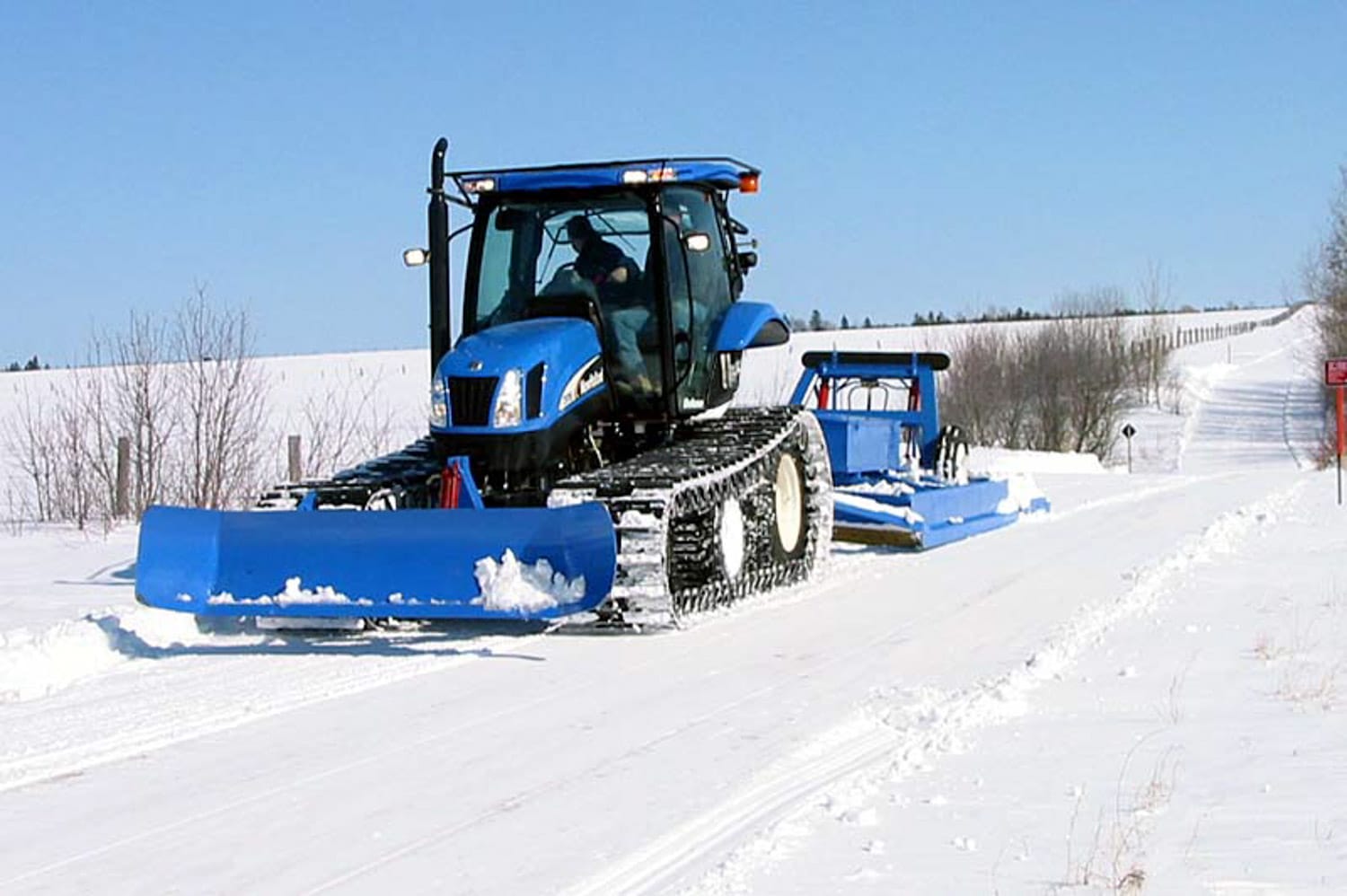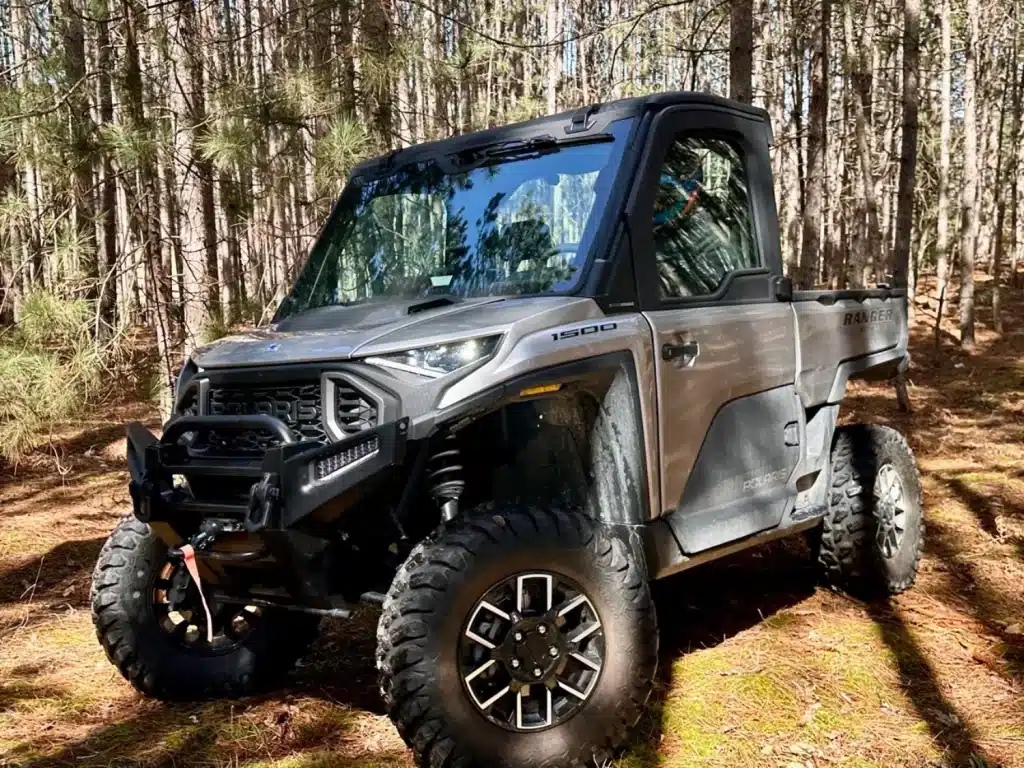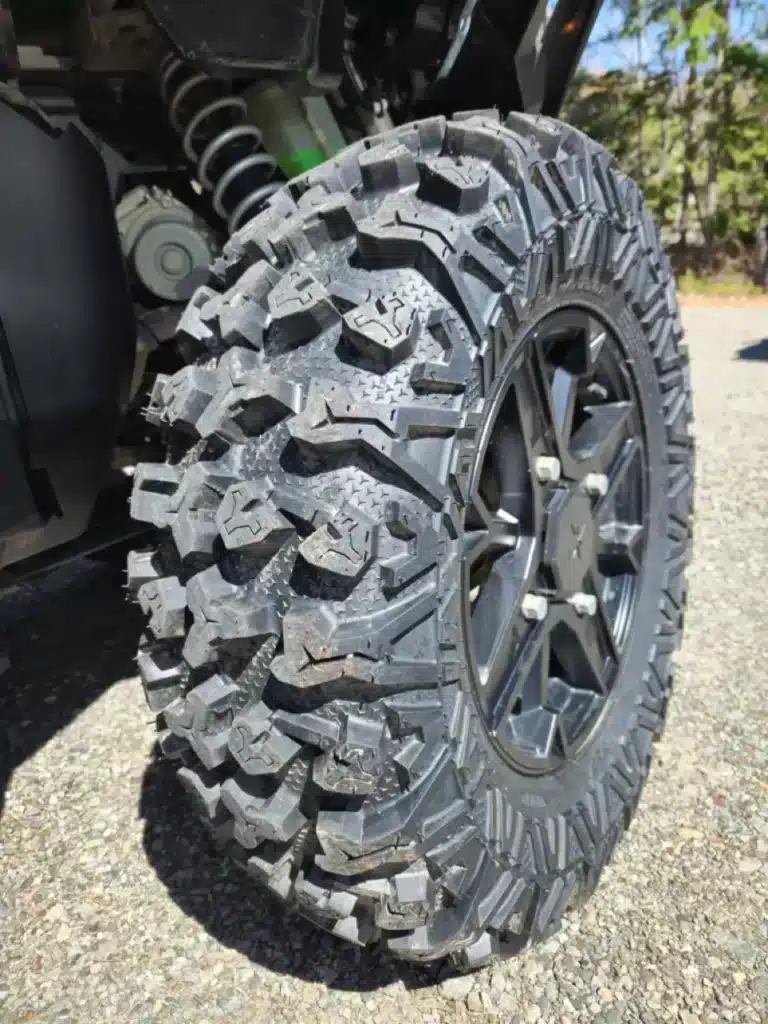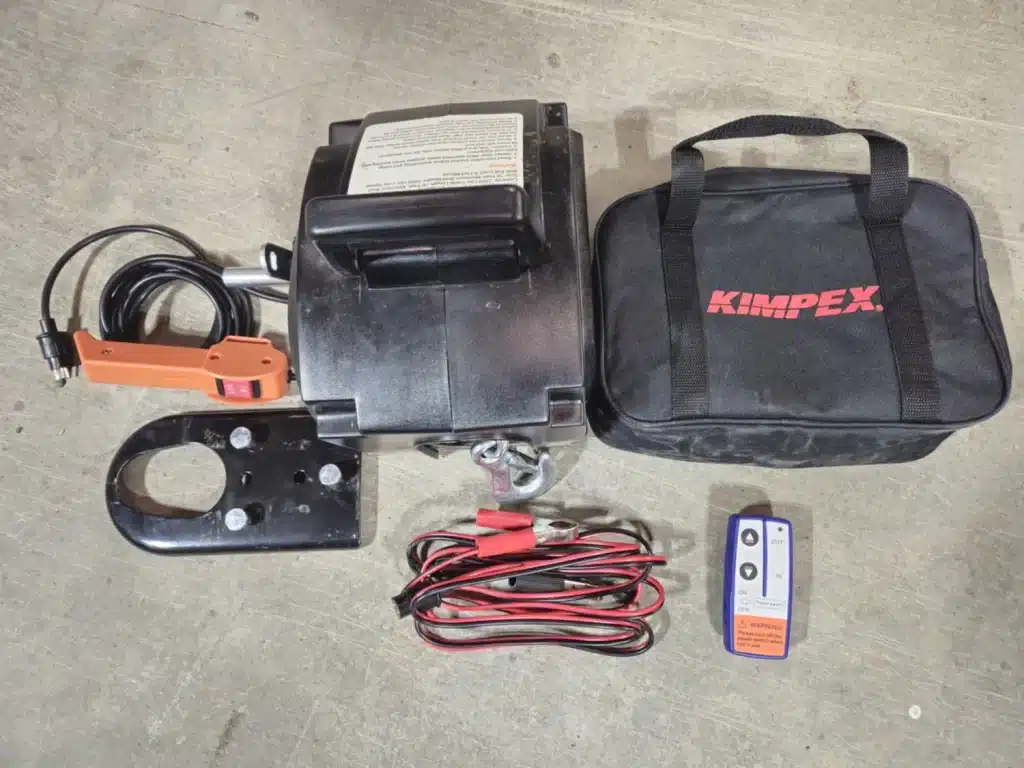Quads are fun vehicles to drive in the winter as long as they can find adequate traction for the tires. This snow traction problem is the Achilles heel of quads in the snow. As long as there is a solid bottom where the tires can grip, it’s going to be okay. When the wheels spin and the vehicle frame leans on the snow, the vehicle is stuck, often in the middle of a windswept field. All the changes in the quad world are forcing club operators to choose the best method that will have the most negligible impact between user enjoyment, environmental constraints, landowner requirements, availability of machinery and operators, and the ongoing operating costs. This equation is not easy to solve.
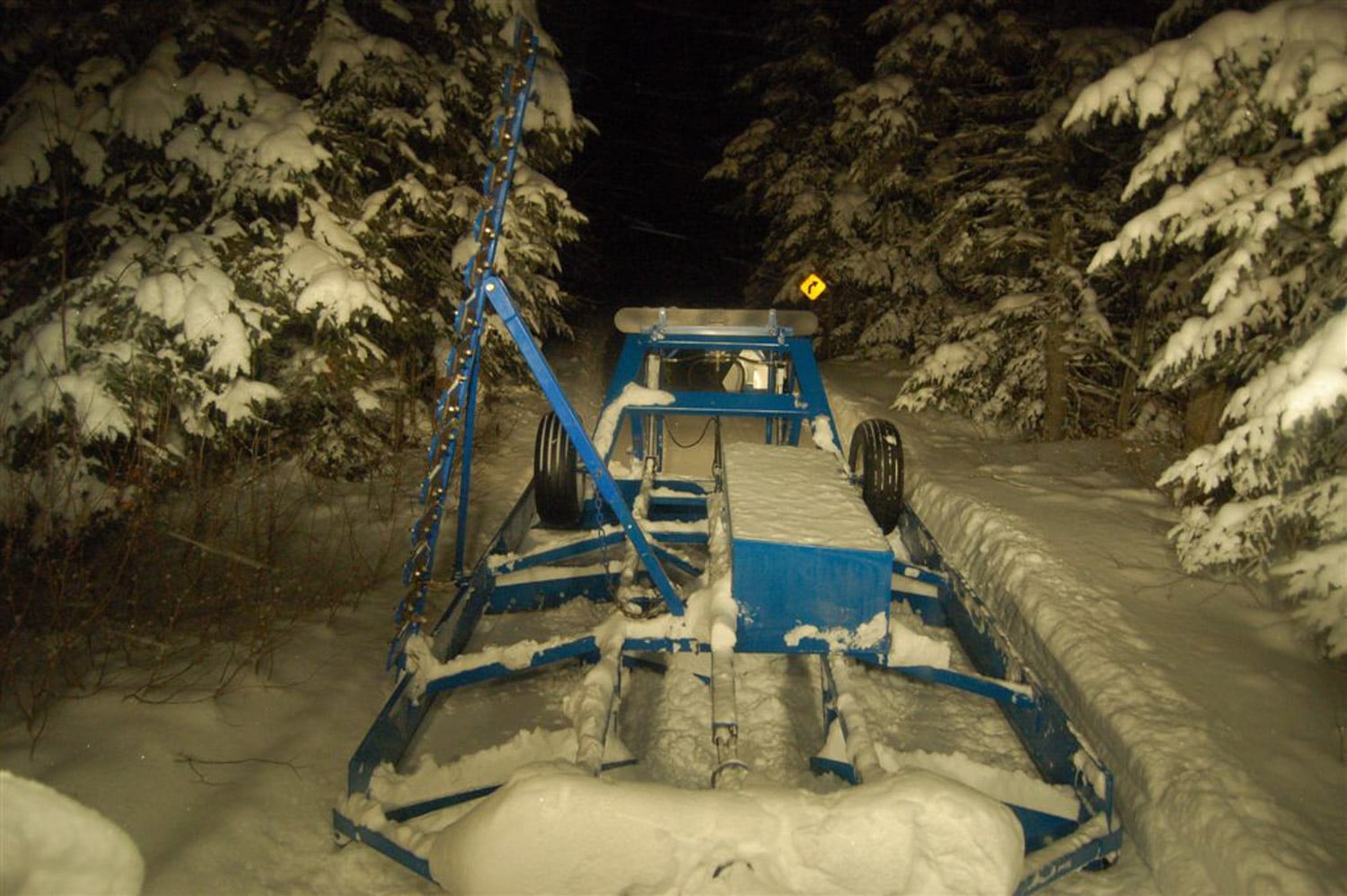
Two schools of thought: snow compaction or removal
At the beginning of the quad activity in winter, ATVs were medium displacement and much lighter. The stress exerted by the wheels on the snow was lower, and the compacted snow surface was less stressed. However, as we know, quads have grown, both at the level of ATVs and UTVs. Although the latter were just a few at the dawn of this decade, recent statistics show that many users have switched to this type of vehicle. 50% of members now drive a UTV. Things are changing, and stakeholders have to adjust to the new operational reality of new customers.
To understand the magnitude of the challenge of continuing with compacted snow, one must know that we are trying to circulate on hardened snow the equivalent of a passenger car, both in mass and in power. Skeptical? For example, the new star of Yamaha, the Wolverine RMAX, is a vehicle in the upper average of the UTVs, therefore not the most extravagant. It is 66 inches wide, 907 kg wet weight (full of all liquids), 108 hp of power. Now, let’s compare it with a 1991 Subaru Justy approved for road use according to Transport Canada standards. The latter also has a 4-wheel drive and a CVT transmission; it is outclassed across the board with its 60.4-inch width, 930 kg of net weight, and a poor 73 hp. Realizing this fact, one can easily imagine that the new quad machines’ stress on the surface of hardened snow becomes unbearable.
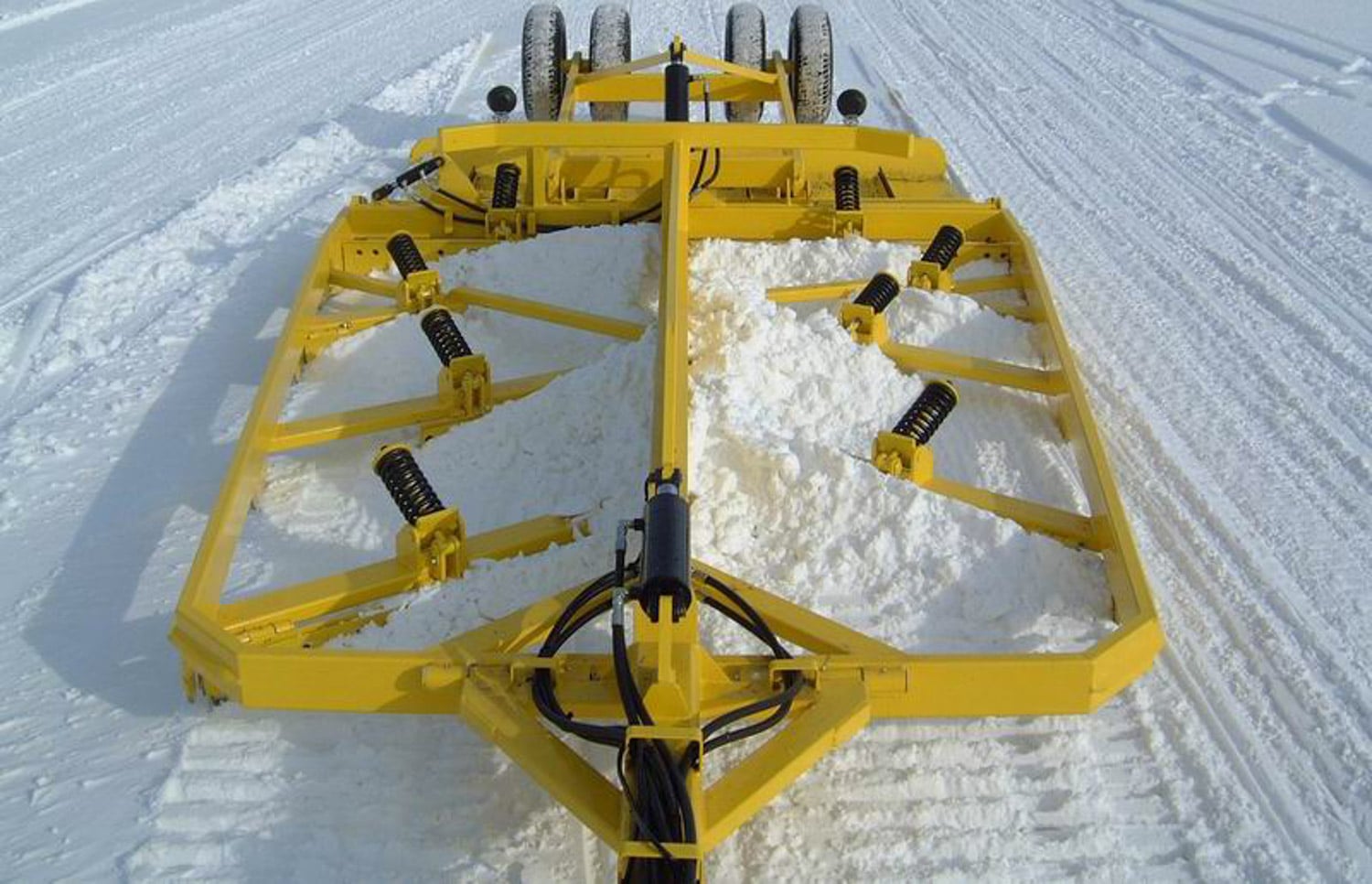
More and more winter trail operators have abandoned the traditional compaction method and switched to removing snow from the trail mechanically to get around this problem. They leave a few inches of hardened snow on the bottom and remove the rest, either with a snowblower or a plow pushed by a powerful machine.
Clearing with plows is ideal for roads and forest paths, but it cannot be applied everywhere. First, we can remove the snow outside the cultivable areas of agricultural fields. On the other hand, no farmer will accept that the snow is removed from the fields and end up with the earth frozen to double the depth of that protected by the snow. Secondly, the solution is viable in wooded paths, but in open ground, the trenches dug will be vulnerable to the slightest blowing snow. Wind-blown snow will fill the trail in under half an hour. However, trails maintained by snow removal located in wooded areas will have a much more durable surface and require less grooming.
Snow removal operations are much slower than grooming, and the club can only cover a fraction of the distance at the same time compared to the compacted snow method. Therefore, the clubs will have to consider lowering the machine-to-kilometer ratio, which means spending even more money to acquire machines.
Many trails are located in agricultural fields and the method of surfacing by snow compaction is still relevant today. It is not likely to disappear in the short term. The rise in size and power of quads has also forced clubs to adjust to new realities and acquire more powerful and efficient groomers to maintain durability equivalent to the trails of 15 years ago. This is in theory, because practically speaking, the financial means do not follow. What other alternative can allow the clubs to do better? Let’s see!
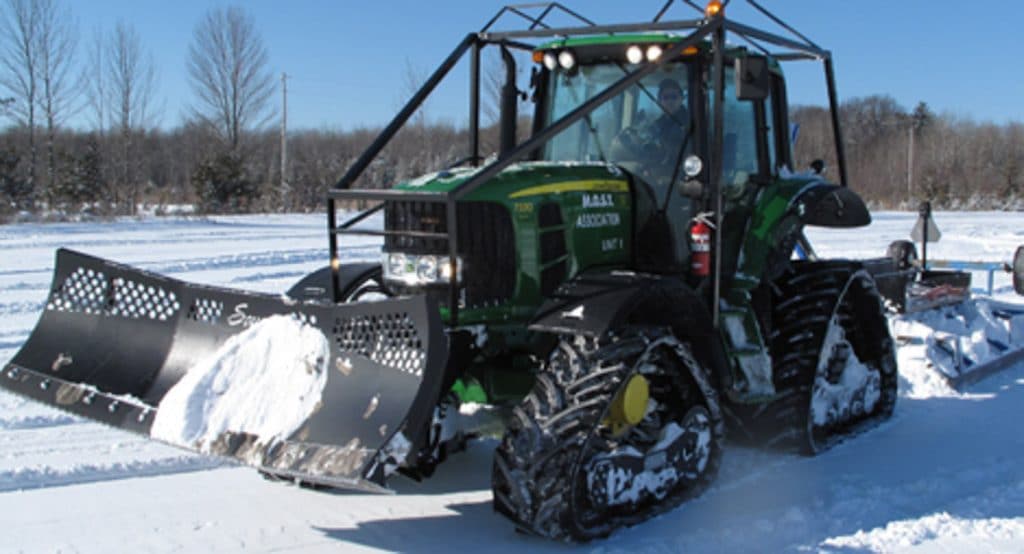
Optimizing snow compaction
We have been looking for hard snow surfaces to withstand transport units for a long time. As early as the 1950s, the US military carried out tests and research to obtain flat, hard surfaces to land planes at bases in the Arctic and Greenland. After studying the properties of snow, research has shown that the most efficient way to compact snow is to use mechanical vibration. The research was done by comparing the results of a vibrating plate and a vibrating road roller.
The results were successful and used in the Arctic by the military. The German company Stehr later took up the idea, which adapted its vibratory plates for aggregates and road construction to meet the new needs of European ski resorts facing climate change. Snow morphology changed, and it was getting harder and harder to get an adequately packed surface. Stehr vibratory plates apply a vibration that expels the air between the snowflakes and redistributes the present water to help crystallize the snow. The snow density and morphology then come close to that of ice, and the snow becomes harder and more resilient. However, the tractors must have high flow hydraulic circuits to operate the vibrating plates.
On the other hand, snow compaction has also been studied and optimized on-site. In Canada’s Far North, ice roads, designed for transportation with heavy trucks, are built from the first snowfall by compacting the snow with large, heavy rollers. The principle is to compress all the snow into thin layers, which will become more and more resistant according to the repetitive passages of the compaction rollers. There is no re-mixing to level the surface. Carriers operating on icy roads are subject to strict discipline with respect to loads, traffic speeds, and driving restrictions during warm weather. These constraints will be difficult to apply in the world of quad bikes.
If the snow compaction techniques could be optimized to an adequate level, clubs would have three significant advantages: the first being to raise the profile of the trail above the snow in the fields, thus making them much less vulnerable to damage from blowing snow. The second advantage is the possibility of using the same motor units. Only the surfacing / compaction sleds would have to be changed. Finally, the third advantage is to extend the season in the spring. The compacted snow is soft under the March sun but crystallizes and becomes hard in the evening. In comparison, the trails where the snow is removed end up quickly in the mud at the slightest warmth or during the spring thaw.
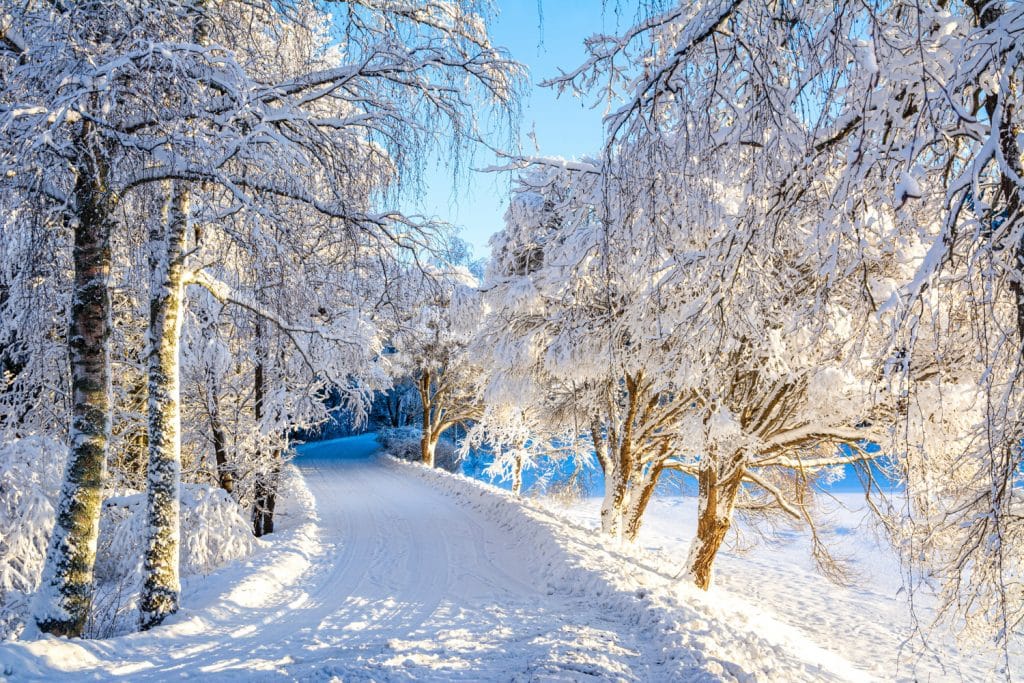
Squaring the circle
The quad world has undergone an impressive evolution in the last 15 years, and it is clear that the mutation is still progressing. Indeed, manufacturers keep producing bigger, heavier, more powerful, and more expensive machines, which always complicates the task of quad clubs.
Trail operators have had to somehow adapt to new realities in the past with more or less successful results in places, depending on the financial means available. In addition to expanding some infrastructure to accommodate the 66-inch wide SXS, many have somehow managed to expand their trail maintenance machinery to accommodate these ever-growing quads. The new realities of trail maintenance are a never-ending puzzle.
In areas with low traffic density, clubs that have obtained good horsepower machines for deep mixing snow during compacted surfacing are doing well. The hardened snow crust holds up. On the other hand, when the traffic density increases, snow must be cleared from the trails with plows installed on heavy and powerful dozers and even with blowers in windy places. The blowers are leaving trenches that will require even more frequent passages of machinery in the plains exposed to the fury of Aeolus. In short, it is a choice that can be very complex between clearing or compaction: choosing between a solid bottom and very frequent passages when the wind picks up, requiring a strong presence of the snow removal teams, or the compaction of snow which is less affected by blowing snow but whose path will be weakened by heavy traffic.
The clubs have reached the last possibility of financing trail machines which are more and more expensive. The tractors in service in the clubs show a venerable age and cannot be patched up for long. Considering that operating the old machines accounts for over 50% of the club’s running costs, it is evident that funding $ 300,000 machines is unthinkable. It must be mentioned that quad and snowmobile clubs do not have access to the same sources of money to provide grants to their affiliated clubs.
In the case of snowmobile clubs, they can obtain a federal subsidy from CED Canada, covering up to 75% of the bill, which will be added to a possible contribution from the provincial federation of up to $ 100,000. With such subsidy levels, the snowmobile clubs will get a zero-cost resurfacer on top of making money from selling their old machine. On the other hand, the ATV club considering the same device may be eligible for a grant of $ 75,000 from the provincial federation or a grant ranging between 50% and 60% of the cost via CED Canada, but the two grants cannot be combined. There will remain an amount to be funded in the range of $ 125,000 to $ 225,000, depending on the number the club draws in the grant lottery.
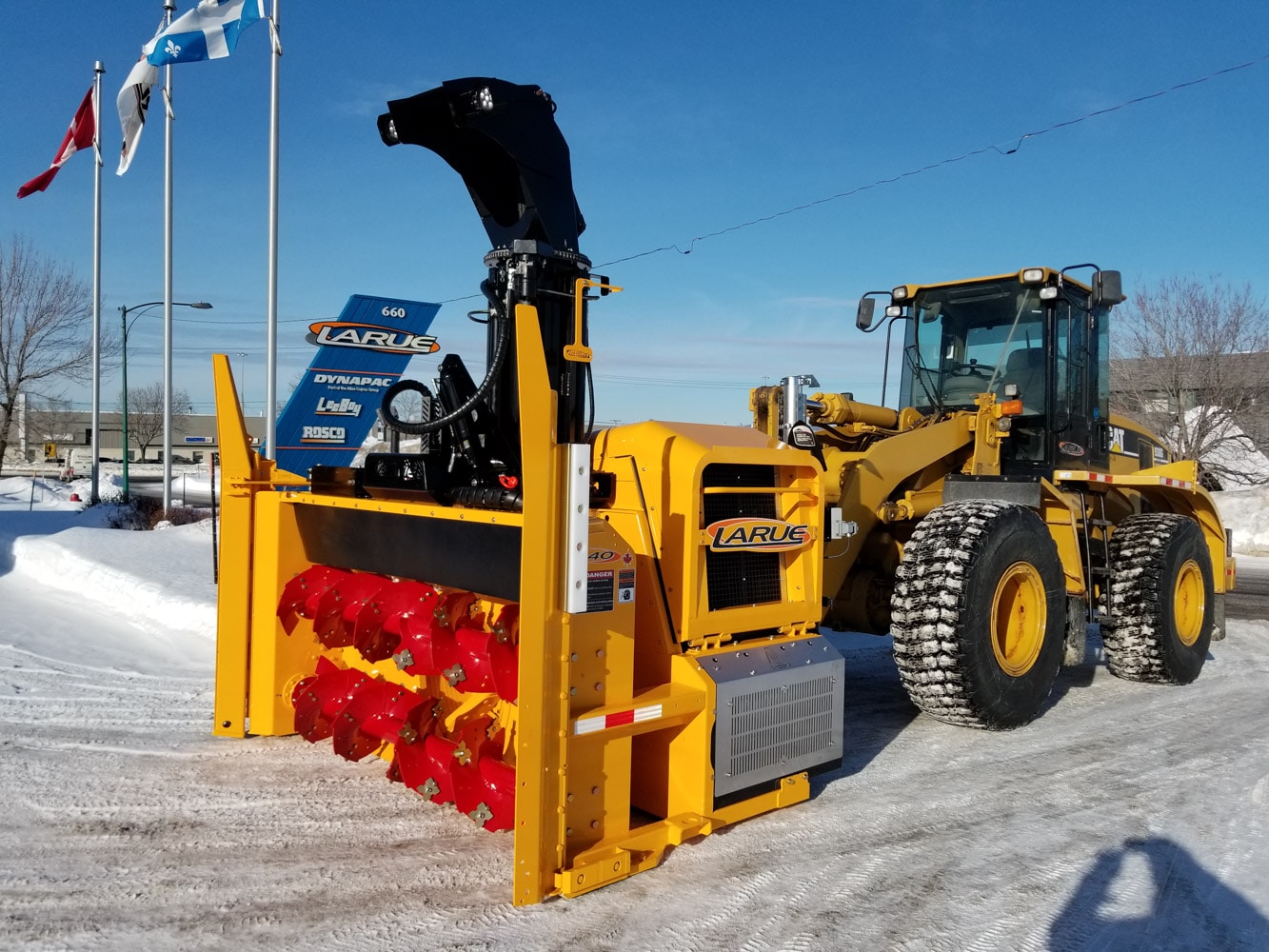
Despite the efforts, this represents a suicidal financial burden. It is understandable why many ATV clubs settle to acquire used machines or struggle to keep their out-of-date equipment. They slowly continue to sink into the lack of maintenance, seasoned with issues of customer discontentment, volunteers’ misery, and the small hope that everything will eventually work out …
In addition to complex financial decisions, trail operators must make a rigorous assessment of their needs based on the terrain’s topography and the club’s capabilities, be it economic, wind exposure, traffic levels, etc. Failure to make a wise choice by misidentifying their needs or even making an irrational purchase, they could find themselves in a difficult situation that could take up to a decade to resolve or worse, put the club in a financial deadlock.
So, where do we stand with winter trail grooming? The situation is delicate because miracle solutions are not within reach of all clubs for the reasons stated above. We come to two apparent observations:
- There is an urgent need to find a technical solution to make winter trails durable enough to withstand vehicles described as suitable by the authorities and quad clubs. The quest to optimize snow compaction on the trails seems to be an important exploration avenue.
- And above all, once the new technical recipe has been developed, the authorities must make adequate funding available to enable ATV clubs to keep up to date.


